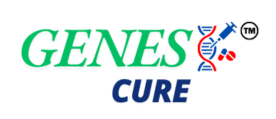Whole Genome Sequencing

What is Whole Genome Sequencing?
Whole Genome Sequencing (WGS) is a powerful genetic testing technique that analyzes an individual’s entire DNA sequence. This involves decoding the billions of base pairs that make up a person’s genetic code.
Why Whole Genome Sequencing is required?
WGS has a wide range of applications, including:
- Disease diagnosis: Identifying genetic mutations associated with rare or undiagnosed diseases.
- Personalized medicine: Tailoring treatments based on an individual’s genetic makeup.
- Drug discovery: Identifying new drug targets and understanding drug responses.
- Research: Studying the genetic basis of complex traits and diseases.
- Ancestry tracing: Revealing an individual’s genetic heritage and migration patterns.
Which are the method of Whole Genome Sequencing?
WGS typically involves the following steps:
- DNA extraction: DNA is extracted from a biological sample, such as blood or saliva.
- DNA sequencing: The DNA is broken down into smaller fragments and sequenced using advanced technologies like Illumina or Nanopore sequencing.
- Data analysis: The resulting sequence data is analyzed using bioinformatics tools to identify genetic variations, such as SNPs, indels, and structural variants.
Who should go for Whole Genome Sequencing?
WGS is often used in research settings and for individuals with rare or undiagnosed diseases. However, as the technology becomes more affordable and accessible, it may be considered for individuals interested in:
- Understanding their genetic risk for certain diseases
- Exploring their ancestry
- Participating in research studies
What are the results of Whole Genome Sequencing?
WGS can provide a wealth of information, including:
- Genetic variations: Identifying SNPs, indels, and structural variants that may be associated with diseases or other traits.
- Carrier status: Determining if an individual carries a gene for a recessive genetic disorder.
- Ancestry: Revealing an individual’s genetic heritage and migration patterns.
- Disease risk: Assessing an individual’s risk for certain diseases.
What are the components of Whole Genome Sequencing?
WGS involves:
- DNA sample: A biological sample containing DNA.
- Sequencing technology: A high-throughput sequencing platform, such as Illumina or Nanopore.
- Data analysis software: Bioinformatics tools for analyzing the sequence data.
- Interpretation: A qualified genetic counselor or healthcare provider to interpret the results and provide guidance.





